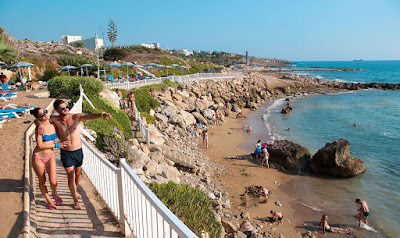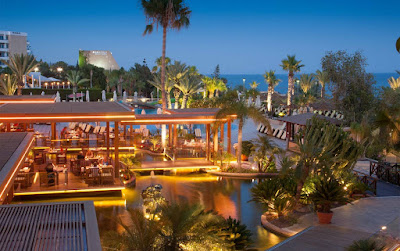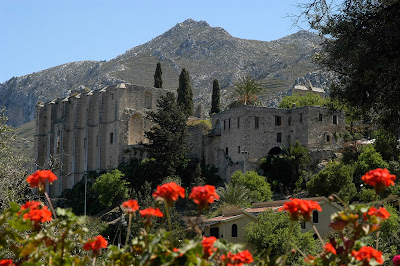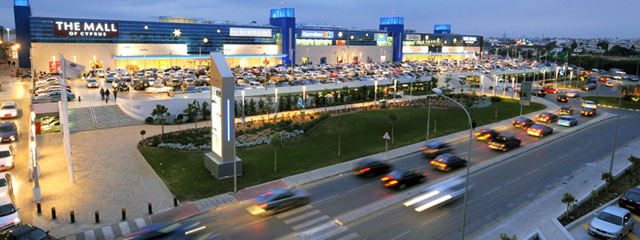
Cyprus is at a historically and strategically significant location, at the crossroads between East and West. Many civilizations have ruled the island and left their marks on its cultural heritage.

Since the Neolithic period, marks have been left by civilizations including the Phoenicians, Assyrians, Egyptians, the Ptolemaic Dynasty, Persians, Hellenes, Romans, Byzantines, Lusignans, Venetians, Ottomans and the British.
Tourism continues to be one of the main engines of economic development in the Turkish Republic of Northern Cyprus. According to 2014 estimates, tourism contributes 9 percent to gross domestic product. The occupancy rate this April was 31 percent. Visitors from Turkey and the United Kingdom make up the biggest share, but the number of tourists from European and Eastern countries has increased significantly in the past few years. The island’s pristine beaches and natural beauty have earned it the title “A Corner of Earth Touched by Heaven.”

The moderate climate of Northern Cyprus is typical for the Mediterranean. The summers are long and hot, and the winters are short with little rainfall. Cold winds, frost and snow are virtually unknown. January low temperatures average 50 degrees Fahrenheit, and the average high in July is 104 degrees. The annual mean temperature is 59 degrees.

Vacationers enjoy the golden sandy beaches, beautiful mountains, castles, abbeys, palaces, rare plant species and tranquil environment, as well as the warm hospitality of the Mediterranean people.
All the hotels and other tourist facilities within the boundaries of Northern Cyprus are functioning according to international standards. The laws pertaining to the permits, licenses and functioning regulations are on par with those of the European Union. The crime rate, according to international monitors, is well below those of Southern Cyprus and Europe.
All the hotels and other tourist facilities within the boundaries of Northern Cyprus are functioning according to international standards. The laws pertaining to the permits, licenses and functioning regulations are on par with those of the European Union. The crime rate, according to international monitors, is well below those of Southern Cyprus and Europe.

Luxury hotels, family hotels, boutique hotels and ecotourism hotels have been constructed in recent years. Tourists swim in the clear waters of the Mediterranean, and amenities include fine buffet dining, conference and seminar halls, swimming pools, water parks, environmentally integrated green spaces, recreation and entertainment activities and gaming facilities.
A modern and well-equipped airport (Ercan) and two seaports (Famagusta and Kyrenia) are fully operational. Ercan International Airport has grown steadily and now serves more than 2 million passengers a year. Thousands of tourists arrive each year in Northern Cyprus via Ercan, and thousands more arrive from Larnaca International Airport in Southern Cyprus and cross into the North to spend their vacations. Many Greek Cypriot citizens also use Ercan for travel.
A modern and well-equipped airport (Ercan) and two seaports (Famagusta and Kyrenia) are fully operational. Ercan International Airport has grown steadily and now serves more than 2 million passengers a year. Thousands of tourists arrive each year in Northern Cyprus via Ercan, and thousands more arrive from Larnaca International Airport in Southern Cyprus and cross into the North to spend their vacations. Many Greek Cypriot citizens also use Ercan for travel.

The number of people visiting Northern Cyprus has continued to increase. In 2011, records show, 801,326 people came from Turkey and 220,763 from other countries. In 2013, these numbers were 923,308 and 309,445 respectively. They show only the people coming through the Northern Cypriot air and sea ports. In 2003, with the border open, many visitors came from the South to visit. Last year, 1,814,708 foreigners visited.

The number of bed nights and occupancy rates also have increased. In 2011, the total number of bed nights was 2,287,869 and the occupancy rate was 41.4 percent. In 2013, these figures were 2,877,564 and 47.9 percent respectively. In 2013, the four top nationalities whose people stayed in tourist accommodation establishments were Turkey, the United Kingdom, Germany and the Netherlands.
By the end of August this year, the total bed capacity reached 19,346 — 69 percent in the Kyrenia region, 7 percent in Gazimagusa region, 19 percent in the Iskele region, 4 percent in the Lefkoa region and 1 percent in the Gzelyurt region.
By the end of August this year, the total bed capacity reached 19,346 — 69 percent in the Kyrenia region, 7 percent in Gazimagusa region, 19 percent in the Iskele region, 4 percent in the Lefkoa region and 1 percent in the Gzelyurt region.

The number of tourist accommodation establishments corresponding to total bed capacity is 132. Of these, 17 are five-star hotels, four are four-star hotels, 10 are three-star hotels, 17 are two-star hotels, 18 are one-star hotels, five are Class II holiday villages, five are boutique hotels, one is a special-class hotel, 29 are tourist bungalows, two are apart hotels, three are traditional houses, one is a holiday home and 17 are tourist guesthouses. Other establishments are under construction with a total bed capacity of 6,250.

This article is written and publish by vincentus de maria's crew under the authority of north Cyprus government to give accurate account of the country
follow us on our facebook page @deinsider
No comments:
Post a Comment